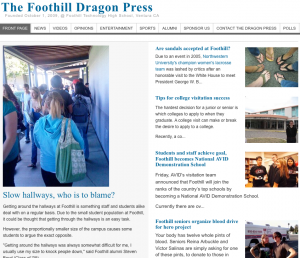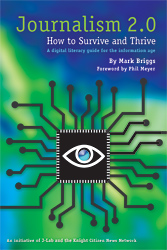In a recent “future of journalism” interview, author Clay Shirky said that things will get worse before they get better. He also said that he’s “a network-inhabiting news junkie of the first order” so the world “has been a paradise of additional information, additional points of view, additional access.”
The challenge – and the revolution – is bringing that additional access and information to average citizens in a local democracy. Independent journalism startups, powered by people whose paychecks used to come from mainstream media companies, are one form that will bridge that gap. But another, possibly more exciting, form is taking shape in the student-powered projects that are popping up all over.
They run the gamut, from News 21, a well-funded and impressive collaboration between eight universities, to student startups like NYULocal, which has 15 staffers and gets more traffic than the school’s newspaper site, according to founder and publisher Cody Brown. (Brown is also launching a project called Kommons.com that is provocative in its approach and will be exciting to watch.)
Now it’s spreading to the high school level with projects like The Foothill Dragon at the Foothill Technology High School in Ventura, Calif.
 “This is the first year we’ve had journalism at the school in five years, so the kids are raw and they have a long way to go to learn good writing, reporting, videotaping, etc.” Melissa Wantz told me via email. “But I think we have a good platform to build on (and we got 450 Facebook fans in less than a month, so I guess that’s a good sign).”
“This is the first year we’ve had journalism at the school in five years, so the kids are raw and they have a long way to go to learn good writing, reporting, videotaping, etc.” Melissa Wantz told me via email. “But I think we have a good platform to build on (and we got 450 Facebook fans in less than a month, so I guess that’s a good sign).”
Wantz is the journalism teacher who built the site (in Joomla) and recently presented the project at a conference at MIT. The site launched in October and the stuents made an introductory video with a great title: We don’t use paper for this. A former journalist, Wantz wonders whether the students truly appreciate what they have accomplished in a relatively short time.
“I don’t think the kids realize what they have with this site and their new journalism class,” Wantz said. “The influence and reach they now have… this generation thinks nothing of using incredibly powerful tools that are absolutely free.”
Maybe their naivete is a good thing. Getting back to Shirky, he wrote in his last book that digital social tools only become powerful when they were taken for granted. (You don’t ask someone if they have email anymore, but 15 years ago you did.) So if our next generation of journalists understands that the power to publish is in their hands (and if they don’t take it for granted), maybe the negative fallout that Shirky predicts can be limited.
One of the bad things I think it going to happen is, I think civic corruption is just going to rise for towns and regions of under about half a million people. Which is to say, I think the old model of the newspaper is going to break faster than the hyperlocal civic reporting can come in its place.
Revolutions are messy. There’s no question that some geographical areas will advance faster than others when it comes to local information and understanding and civic participation. But the potential to create a better-informed society is undeniable.
“I guess this is what it’s like to live through a revolution, the older people (I’m 46) are practically suspended in wonder at the changes and opportunities, and the younger people are just using the new tools like it’s no big deal,” Wantz said. “It’s not like the kids are out in front of me in terms of their knowledge of what’s possible, but in terms of their reaction to what’s possible? I’m not sure it’s possible to get a rise out of a teenager who carries a computer in his pocket. They have no idea when they became (so) connected. They just are.”
If a service or platform or other technological invention connects them and empowers them to inform one another, journalism has a bright future. It will look very different than it does today or has for the past 150 years. It may be viewed as a “social utility” – or “societal utility” – more than a professional craft. But it doesn’t matter what it’s called or who participates in it, as long as we move closer to the rain forest of local information and away from the desert.
 Mark Briggs
Mark Briggs  Posted in
Posted in 




